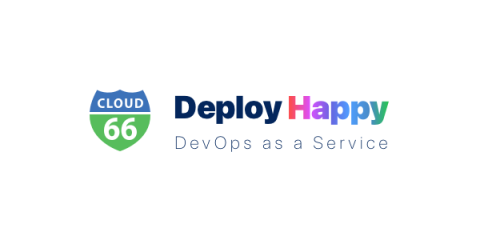Operations | Monitoring | ITSM | DevOps | Cloud
Latest Posts
Announcing support for Ubuntu 24.04 LTS Noble Numbat on all Cloud 66 products (including registered servers). From this point onward, newly added servers will have Ubuntu 24.04 installed. Don't forget, you can control your target Ubuntu version via a selection dropdown when scaling up via the UI, or through your manifest! Ubuntu 24.04 is a Long-Term Support (LTS) release and will receive ongoing app updates and critical security fixes until June 2029.
The Ultimate Guide to implementing Hotwire and Turbo in a Rails application
Hotwire and Turbo have revolutionized how we build modern web applications with Ruby on Rails. By leveraging server-side rendering and minimizing JavaScript, Hotwire enables developers to create reactive, real-time user experiences without the complexity of a single-page application framework. This comprehensive guide will walk you through implementing Hotwire and Turbo in a Rails application from the ground up.
Announcing Cloud 66 Secrets
I love writing about features that take only a few sentences to introduce! Today, I am excited to tell you about Cloud 66 Secrets. Frankly, there is not much I can write about, because this is a feature that's easy to understand for all developers and we made it so easy to use that you will be up and running in minutes. But I'm going to try and write everything you might need to know about Cloud 66 Secrets here, so let's go!
Blue-Green and Canary Releases for Kubernetes
Today I am very happy to announce the general availability of Blue Green and Canary releases for Kubernetes on Cloud 66. Allowing Blue Green and Canary releases for Kubernetes is the result of months of hard work by the team here at Cloud 66 and I am very pleased with the results. We wanted our Blue Green and Canary releases to be simple to use and I think we have found the sweet spot between flexibility and ease of use. Today we are also rolling out Preview deployments to GA for all our customers.
How to add feature flags to your Ruby on Rails applications
Feature flags are a way to affect how your application behaves at runtime, without having to deploy new code. As the name suggests, they can be used to switch certain features on or off depending on a specified rule. A type of feature flag you have probably already encountered can be implemented as simple environment variables. Consider the following code you typically find in every Rails app’s production.rb.
Hetzner Connectivity Issues Due to Sanction Busting Activities
After AWS and DigitalOcean, Hetzner Cloud is the third popular cloud provider with our customers. At the time of writing, around 9% of our customers deploy their applications on Hetzner. Our customers love their simple and straight forward product and pricing as well as their affordable bare-metal options. Over the past few months, many of our Hetzner customers reached out to us with complains of deployment failures.
How to use Tailscale for gRPC authentication in Golang
Friends of this blog know that I am a big fan of building internal tools, or as we call them, "tools that help scale people". As the name suggests, internal tools are used, well, internally and as such usually will require their access to be restricted to the company's staff and network. In the past, I've written about how to use Tailscale for authentication of internal tools using HTTP. In this post, I will show you how to use Tailscale for gRPC authentication in Golang.
A New and Redesigned Deployment Options
Today we have rolled out a change in the way you can configure each deployment of your application. Normally you deploy your apps, using the Deploy button on the top right corner of your application page. This will deploy your application based on the "default" Deployment Profile. You can also customize your deployment, using the "Deploy with Options" item on the deploy menu. With today's rollout, we've made improvements to this flow.
Pros and Cons of Deploying Rails Applications Natively vs Containerized in 2024
This blog post aims to dissect the various deployment options available for Rails applications in 2024, emphasizing the choice between native and containerized approaches. It dives into the advantages and drawbacks of each method and explores the hosting options available for each. Let’s dive right in!
Using Rails with SES, SNS and SQS to avoid bounce rate
Amazon Simple Email Service (SES) is a cost-effective email service provided by AWS. It is by far the cheapest option available out there. Comparing the cost of sending emails with SES and other services like SendGrid or Mailchimp, it can be 100x cheaper. However there is a catch. Using SES directly, you will not get some of the features you might need to control the bounce rate of your emails.



